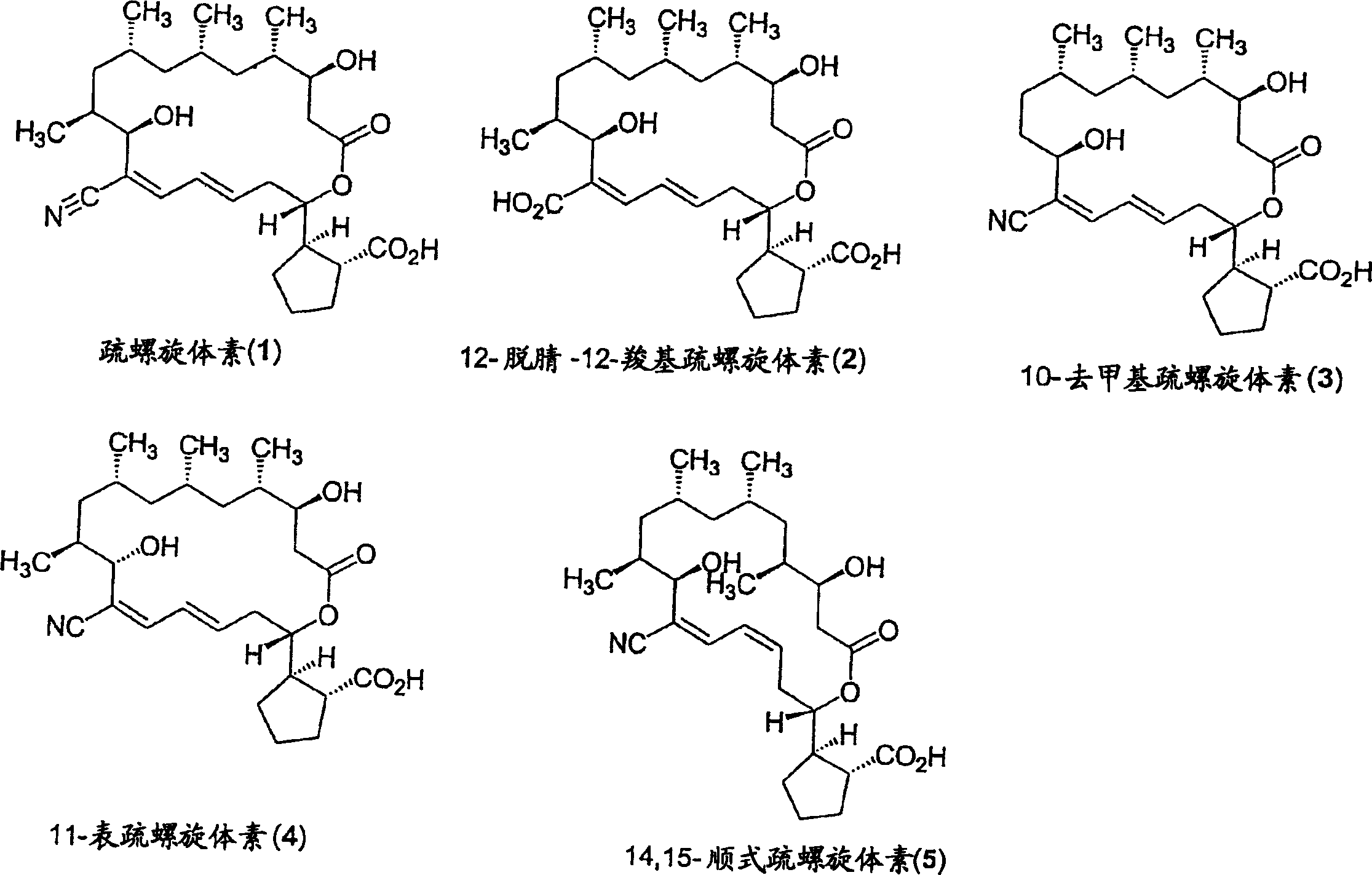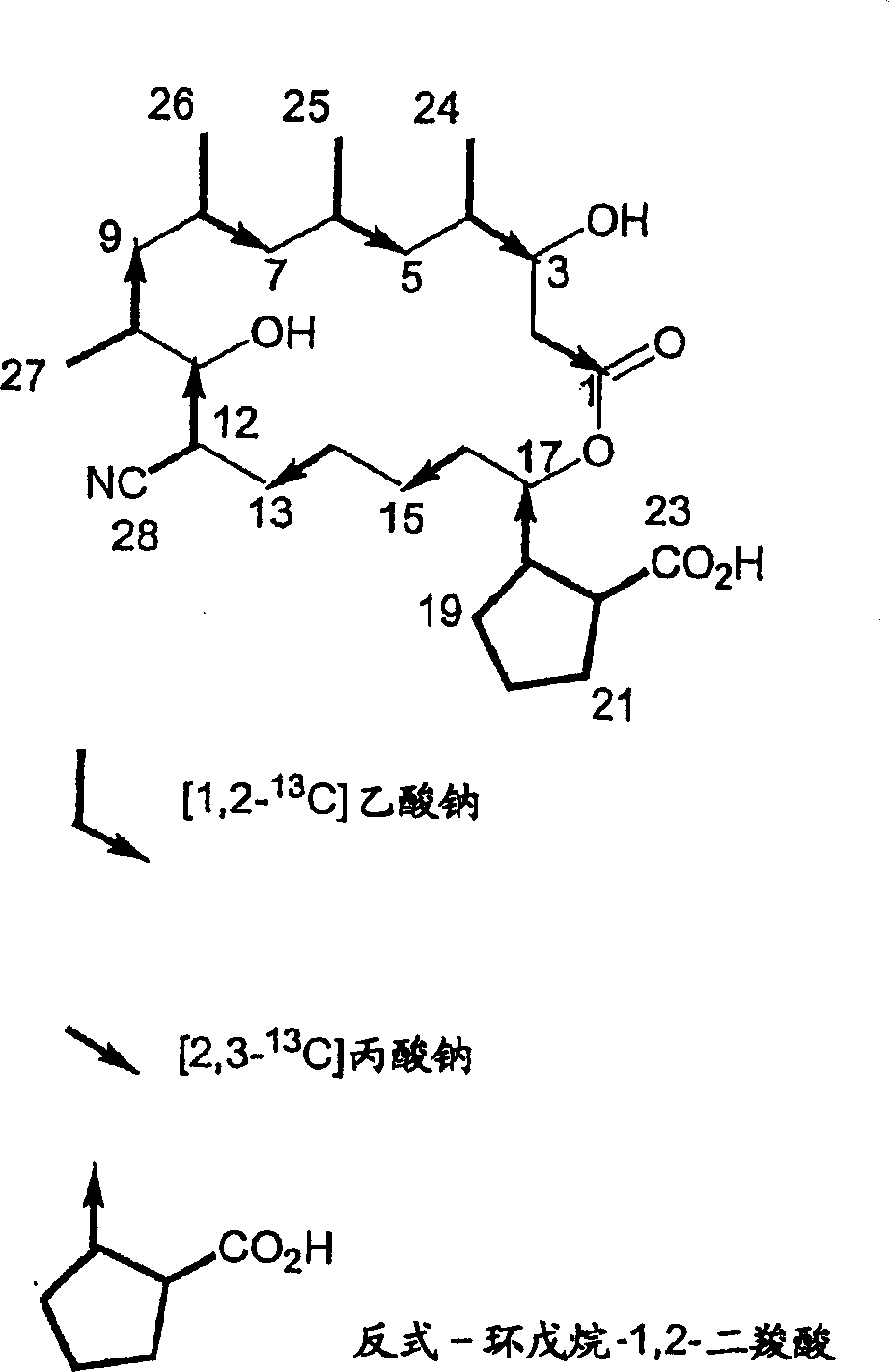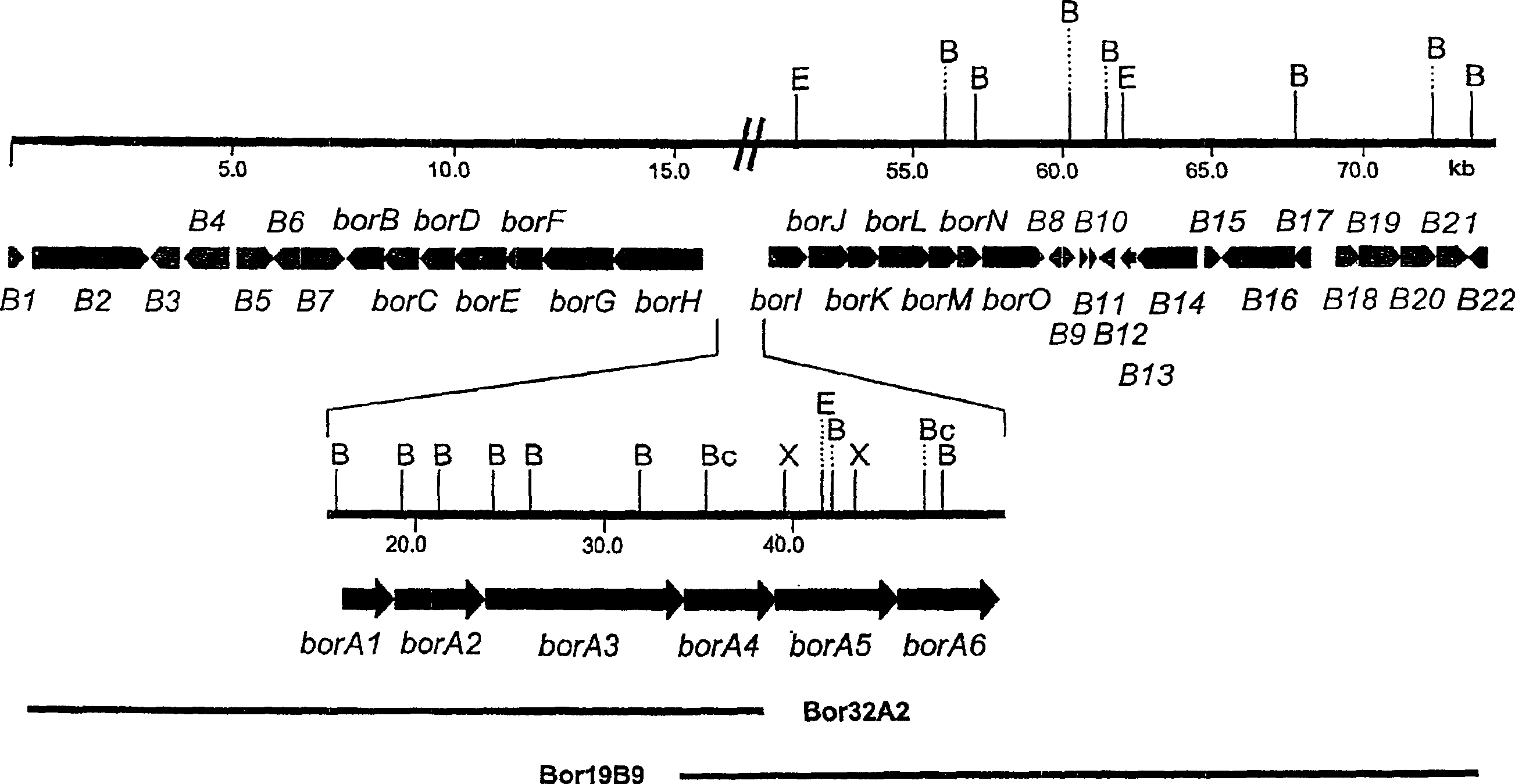Borrelidin-producing polyketide synthase and its use
A spirovoxel and nucleotide sequence technology, which is applied in the field of materials for preparing polyketide compounds, can solve the problems of colon adenocarcinoma cells, such as the reduced ability to metastasize and form
- Summary
- Abstract
- Description
- Claims
- Application Information
AI Technical Summary
Problems solved by technology
Method used
Image
Examples
Embodiment 1
[0222] Example 1: Fermentation of Streptomyces minor strains
[0223] The following methods can generally be used to grow Streptomyces parvum to produce borrelidin and / or borrelidin analogs:
[0224] Seed flasks containing NYG medium (30ml in a 250ml Erlenmeyer flask) were inoculated from the working stock (0.5ml). NYG medium contained (in deionized water): beef extract (0.3%), bactopeptone (0.5%), glucose (1%) and yeast extract (0.5%). After shaking for 2 days in a rotating incubator (2-inch eccentricity; 30° C.; 250 rpm), the resulting paste culture was used to inoculate PYDG production medium (30 ml in a 250 ml Erlenmeyer flask; 10% inoculum). PYDG medium contained per liter of deionized water: peptonized milk nutrients (1.5%), yeast autolysate (0.15%), dextrin (4.5%) and glucose (0.5%), adjusted to pH 7.0. After 5 days of shaking on a rotating incubator (after 2-inch eccentricity; 30°C; 250 rpm), cultures were harvested for analysis as described in Example 4, or for isol...
Embodiment 2
[0227] Embodiment 2: the cryopreservation of Streptomyces minor strain
[0228] working stock
[0229] A working stock of vegetative mycelium was prepared by mixing a 2-day old seed culture grown in NGY medium (0.5 ml) with cryopreservation solution (0.5 ml). The cryopreservation solution consisted of 20% glycerol and 10% lactose in deionized water.
[0230] Spore stock
[0231] Strains of Streptomyces minor were incubated on HA agar plates at 30°C. After 14 days, the resulting spores were harvested from individual plates and suspended in cryopreservation solution (1 ml). HA agar contained in deionized water: 0.4% yeast extract, 1% malt extract, 0.4% dextrose and 1.5% agar, adjusted to pH 7.3.
Embodiment 3
[0232] Example 3: Cloning of Borrelidin Biosynthesis Gene Cluster and Disruption of borA2 & borA3
[0233] Cosmid library generation
[0234] The Gigapack_III Gold Packaging Extract kit was used according to the manufacturer's manual (Stratagene). Cosmid libraries were constructed in the pWE15 cosmid vector. Chromosomal DNA was extracted from Streptomyces minor Tü4055 and treated with Sau3AI and cloned into pWE15 according to standard protocols (Kieser et al., 2000). A number of resulting E. coli transformants (3300) were picked and transferred to 96-well microtiter plates containing Luria broth (LB) medium (0.1 ml / well) and ampicillin (100 μg / ml). The resulting clones were replicated on Luria agar (LA) plates containing ampicillin (100 μg / ml). After overnight incubation at 37°C, colonies were transferred to nylon filters for in situ colony hybridization analysis according to published protocols (Sambrook et al., 1989).
[0235] library screening
[0236] Cosmid libraries...
PUM
 Login to View More
Login to View More Abstract
Description
Claims
Application Information
 Login to View More
Login to View More - R&D
- Intellectual Property
- Life Sciences
- Materials
- Tech Scout
- Unparalleled Data Quality
- Higher Quality Content
- 60% Fewer Hallucinations
Browse by: Latest US Patents, China's latest patents, Technical Efficacy Thesaurus, Application Domain, Technology Topic, Popular Technical Reports.
© 2025 PatSnap. All rights reserved.Legal|Privacy policy|Modern Slavery Act Transparency Statement|Sitemap|About US| Contact US: help@patsnap.com



